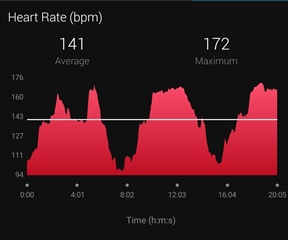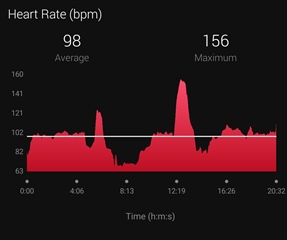I'd really like for it to work the same in both.
It feels like they're making the assumption that "Yoga" mean slow, hold poses etc. kind of yoga.
I'm a 6'4" (semi-fit at best) dude that really loves the yoga where you're always transitioning positions and the room is 100 degrees, they call it "hot vinyasa flow".
My heartrate once I get going sits between 130 and 170 and I always keep an eye on it and back off when I hit 170 otherwise I redline real quick.
In yoga mode heart rate is always low. If i switch and record the activity as generic "Cardio" my heart rate reports right up to where it should be. "Should be" is compared to my old Garmin Forerunner 35 (which I tested to within ~5bpm of my cheap chest strap).
Is there anything I can do other than stick with Cardio mode and hope that Garmin fixes it at some point?




